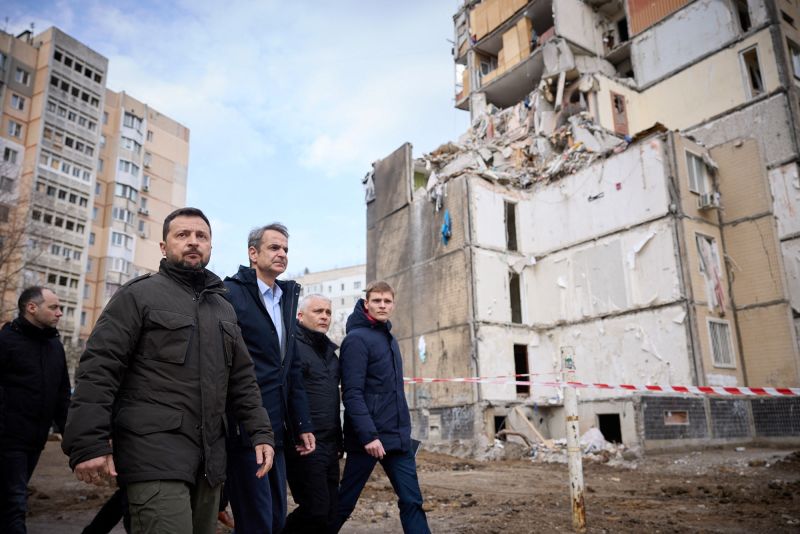Body Content:
The notoriety of the military conflicts in Ukraine took a startling turn when a deadly Russian missile struck alarmingly close to a convoy carrying the Ukrainian leader, Volodymyr Zelensky, and his Greek counterpart, Prime Minister Kyriakos Mitsotakis.
On the day of the incident, both heads of state were travelling together, undertaking official diplomatic duties to reinforce each country’s support for their shared political and economic ties, when they had a too-close-for-comfort brush with death. The missile, according to official sources, belonged to the Russian military outfit.
The details surrounding the incident are as dramatic and harrowing as anticipated in such perilous situations. The missile strike occurred out of the blue when the convoy was on a routine, albeit war-zoned, mission on a highway between the Ukrainian cities. Such a close encounter with danger on a war-torn path raised the stakes in this already heightened conflict.
This dramatic near-miss draws attention to the precision and potency of modern weaponry, in this case, the Russian missile. State-of-the-art technology enables these offensive tools to accurately target their prey—or perhaps miss them with the same level of precision. The fact that the missile strike hit close but did not strike its potential targets suggests that technology, regardless of how advanced, can sometimes have unpredictable and inconsistent results.
The missile’s close proximity to the convoy carrying the leaders evoked shock waves not only within the political circles of Ukraine and Greece but also globally. This incident intensifies the concerns about the safety of high-rank officials amidst ongoing conflict. It underscores the tangible danger that the leaders, their personnel, and ordinary citizens are subjected to during an unresolved conflict.
In the modern history of warfare, the direct targeting of a head of state is not entirely without precedent. However, it’s always seen as a severe and extraordinary escalation. If the incident turned out to be a deliberate attack rather than accidental or unintentional, it would have mark grave implications, leading to heightened tensions between the respective countries and the international community at large.
Although the incident has been described as shocking, it fits into a broader pattern of attacks witnessed amid the tethered relations between Russia and Ukraine. Regardless, it amplifies international fears about the ongoing instability and continued war in the region.
The timing of this near-miss is also telling, occurring amidst the backdrop of complex diplomatic negotiations and maneuverings that indirectly drag other nations into the fray. In this instance, the missile’s strike location, so close to a convoy of two prominent world leaders, amplified the seriousness of the ongoing conflict and increased the urgency for its resolution.
Providing insight into the severity of the situation, this potentially catastrophic incident has forced the international community to reassess Ukraine’s predicament. The rise in violence and the target of high-profile personalities demand a reconsideration of strategies and policies to mitigate escalating tensions and ensure the safety and security of influential individuals.
In conclusion, the incident where a potentially deadly Russian missile struck perilously close to the convoy of Ukrainian and Greek leaders underscores the risks, complexities, and uncertainties inherent in the ongoing Russian-Ukrainian conflict. Amidst the reality of modern warfare, where high-tech weaponry blurred the lines of conflict, it acts as a stark reminder of the immediate dangers at hand and the urgent need for a peaceful resolution.




